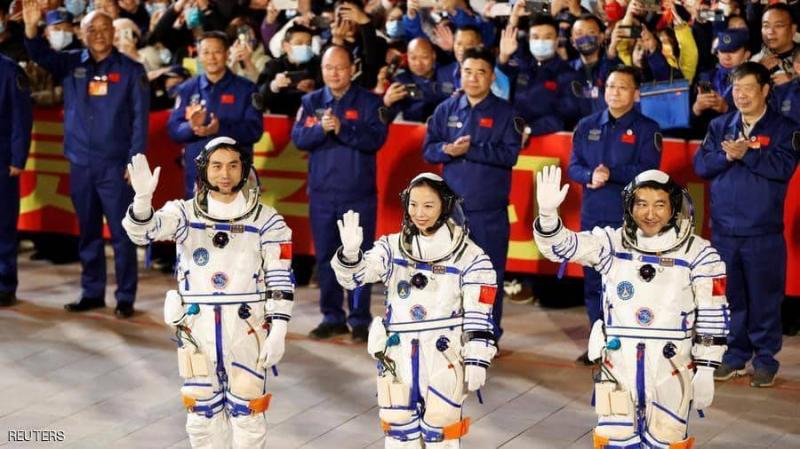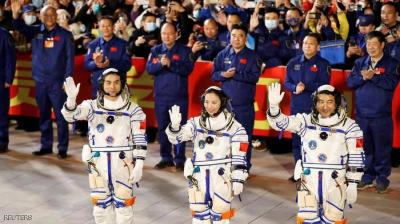China launched a rocket early this Saturday carrying a spacecraft with three astronauts, including a woman, to the core of a future space station where they will live and work for six months, marking the longest orbital mission for Chinese astronauts to date. A "Long March-2F" rocket carried the "Shenzhou-13" spacecraft from the Jiuquan Satellite Launch Center in Gansu Province, northwestern China, at 12:23 AM Saturday Beijing time.
The China Manned Space Agency announced that the spacecraft successfully docked with the space station, and the astronauts entered the core module of the space station at 10:03 AM Beijing time. The new crew includes two seasoned space travelers, namely 55-year-old Chai Chihung, who conducted China's first spacewalk, and 41-year-old astronaut Wang Yaping, the only woman on the mission, who has several space missions under her belt and led a scientific session in real-time while traveling on one of China's previous experimental space stations. Yi Guangfu, 41, is embarking on his first space journey, according to the Associated Press.
The mission is expected to continue the work of the initial crew, who conducted two spacewalks, installed a 10-meter mechanical arm, and held a video call with Chinese leader Xi Jinping. China began building what will be its first permanent space station in April by launching the largest and first of three modules, called "Tianhe," which translates to "Harmony of the Heavens," measuring 16.6 meters in length and 4.2 meters in diameter.
This current mission marks the second of four planned manned missions to complete the station by the end of next year, according to Reuters. In the first crewed mission that ended in September, three astronauts stayed in the Tianhe module for 90 days.
In the latest mission, the Chinese astronauts will perform essential tests on key technologies and robotics within the Tianhe module for assembling the space station, verify life support systems aboard the station, and conduct various scientific experiments. China has spent the past decade developing its own technologies.
U.S. law prohibits collaboration between China and NASA, thus hindering China's participation in the International Space Station (ISS). With the ISS slated for retirement in a few years, the Chinese space station will become the only one in orbit around Earth. China became the third country to send a person into space with its own rocket in October 2003, following the former Soviet Union and the United States.




